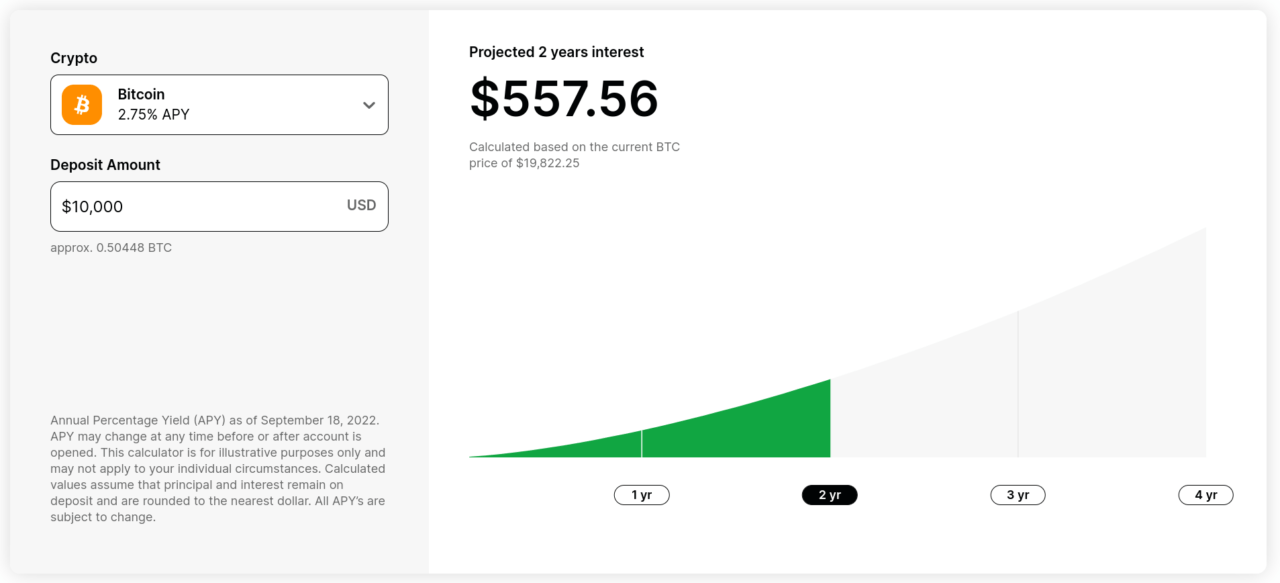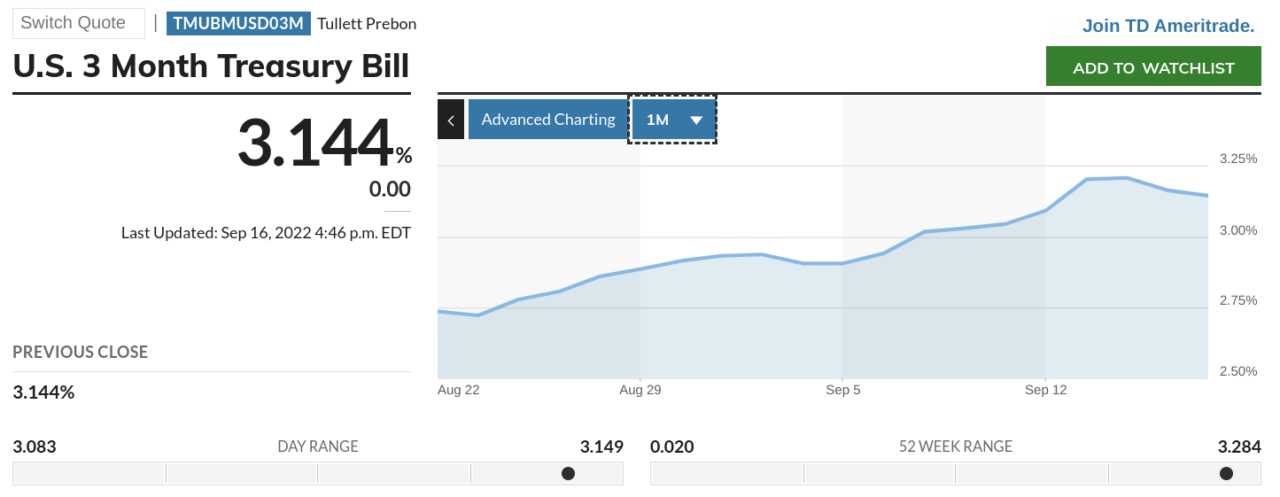Crypto Lending Reportedly Offering Worse Yields Than 3-Month U.S. Treasuries

According to a recent report by Bloomberg, “crypto yields that institutions typically seek out have fallen below what the US government pays to borrow for three months, giving the hedge funds and family offices that have flocked to the digital space one less reason to keep investing.”
Here is how Investopedia defines crypto lending:
“Crypto lending is the process of depositing cryptocurrency that is lent out to borrowers in return for regular interest payments. Payments are made in the form of the cryptocurrency that is deposited typically and compounded on a daily, weekly, or monthly basis.“
For example, on crypto exchange Gemini, after you open an account, “you can purchase any amount of cryptocurrency and immediately transfer it to Gemini Earn to start earning interest on your holdings.”
Currently (as of September 18), if you deposit $10,000 worth of Bitcoin, you can earn 2.75% APY:

Source: Gemini Earn
Treasury bills (or T-Bills) are debt obligations — with a maturity one year or less — issued by the U.S. Department of the Treasury.
As you can see from the chart below (by MarketWatch), on Friday (September 16), the yield on the U.S. 3-Month Treasury Bill was 3.144%.

Source: MarketWatch
On September 13, Bloomberg published a report that said “the Federal Reserve’s hawkish stance is driving up interest rates almost everywhere — except in the speculative world of crypto, where yields have collapsed alongside volumes, wiping out some of the main avenues for generating double-digit returns, while the implosion of the Terra stablecoin project and the failures of crypto lenders like Celsius Network shook confidence.”
Jaime Baeza, CEO of crypto-focused hedge fund ANB Investments, told Bloomberg:
“Two years ago, interest rates in crypto were at least 10% and in the real world rates were either negative or near-zero. Now it’s almost the reverse, because yields in crypto have collapsed and central banks are raising rates.“
The Bloomberg report went on to point out that “unlike in traditional markets, falling yields don’t signal lower risks for crypto” since “yields are shaped by trading volumes rather than risk sentiment, and reflect the rate an investor can hope to earn lending out holdings on exchanges and decentralized-finance protocols, or depositing them with crypto lenders, often in the form of stablecoins.”
The report also stated that “because they have no direct relation to central bank rates, crypto yields can slump even as borrowing costs spike across financial markets to reflect steep Fed hikes.”
Image Credit
Featured Image via Pixabay






 Bitcoin
Bitcoin  Ethereum
Ethereum  Tether
Tether  USDC
USDC  TRON
TRON  Dogecoin
Dogecoin  Cardano
Cardano  Bitcoin Cash
Bitcoin Cash  Chainlink
Chainlink  LEO Token
LEO Token  Stellar
Stellar  Litecoin
Litecoin  Hedera
Hedera  Monero
Monero  Dai
Dai  OKB
OKB  Ethereum Classic
Ethereum Classic  Cronos
Cronos  Gate
Gate  Cosmos Hub
Cosmos Hub  VeChain
VeChain  Algorand
Algorand  KuCoin
KuCoin  Stacks
Stacks  Tether Gold
Tether Gold  Theta Network
Theta Network  Zcash
Zcash  IOTA
IOTA  Tezos
Tezos  TrueUSD
TrueUSD  NEO
NEO  Polygon
Polygon  Decred
Decred  Dash
Dash  Qtum
Qtum  Zilliqa
Zilliqa  Ravencoin
Ravencoin  Synthetix Network
Synthetix Network  Basic Attention
Basic Attention  0x Protocol
0x Protocol  Siacoin
Siacoin  Holo
Holo  DigiByte
DigiByte  Enjin Coin
Enjin Coin  Nano
Nano  Ontology
Ontology  Status
Status  Hive
Hive  Waves
Waves  Lisk
Lisk  Pax Dollar
Pax Dollar  Steem
Steem  Numeraire
Numeraire  BUSD
BUSD  Huobi
Huobi  OMG Network
OMG Network  NEM
NEM  Bitcoin Gold
Bitcoin Gold  Ren
Ren  HUSD
HUSD  Augur
Augur